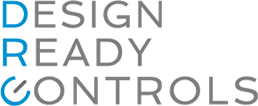Ultimaker 3 Adds Value to Manufacturing
A new 3D printer recently joined the ranks at Design Ready Controls—the Ultimaker 3. Along with our Makerbot Replicator and Markforged 2, the Ultimaker is an investment in process improvement and advanced manufacturing.
3D Printing Benefiting Companies Of All Sizes
For companies of all sizes, 3D printing can add significant capabilities at low cost. It allows in-house production of prototypes, custom tooling, and one-off project builds, eliminating the time and expense of using external suppliers. With the purchase of the Ultimaker, engineers at Design Ready Controls spend far less time troubleshooting. We rely less on trial and error, and save hours of experimentation and failed prints.
Additive manufacturing lends agility and efficiency to manufacturing companies seeking innovation and custom, rapid design possibilities. As these technologies evolve, users need to stay current on their development.
Additive manufacturing is a rapidly advancing field. New software, hardware, print materials, and designs are cropping up in industries of all kinds.
Considerations For Choosing The Ultimaker 3
Our Manufacturing Engineering group chose the Ultimaker 3 for its advantageous features, such as an automatic leveling system for improved dimensional accuracy and smoother print surfaces. The Ultimaker has a greater level of accuracy or tolerance than most other 3D printers. Instead of a 0.4 – 0.05mm max layer resolution, it has a resolution range of up to 20 microns or 0.02 millimeters. Line layers are barely visible, edges are sharp for 90 degrees, and surfaces are smooth to the touch.
Its heated glass build plate reduces vibration and increases build plate adhesion for improved accuracy. A nozzle-lifting feature eliminates nozzle collision. Standard dual extruders reduce the risk of clogging and prevent extended downtime. This also allows us to make prints with multiple filament colors and types, which is not possible with many 3D printer models.
Ultimaker 3 Filaments
We typically use two filaments in the Ultimaker: the main PLA filament and a stronger, heat resistant ABS product. The Ultimaker can print at temperatures as high as 280 degrees Celsius, allowing us to create multi-filament prints, use glow-in-the-dark filament, and more. Ultimaker filament rolls contain NFC chips that help the machine identify the filament type and automatically adjust its settings for that filament. This saves significant amounts of time and eliminates the risk of errors in manual programming.
Another valuable feature of the Ultimaker 3 is its ability to print water-soluble PVA filament, which is used to support standard filament. Some 3D prints can sag before the extruded filament cools. Support filament helps them retain their shape—and then, instead of requiring meticulous removal to avoid damage, the support filament dissolves completely in water within 24 hours.
We also wanted a 3D printer we could update and maintain ourselves. The CURA is free and open-source software that has nearly 200 adjustment settings, and Ultimaker allows users to buy new parts from a variety of sources. The return on our investment in the Ultimaker was recouped within a handful of prints.
Benefits of 3D Printing
We use 3D printers for a variety of projects, including prototyping, one-off builds like wire guides, and custom tooling such as robotic grippers and pliers. The majority of the design process takes place digitally, so the design can be edited at any time. This eliminates the costs of outsourcing a prototype build, as well as potentially expensive and time-consuming design alterations. This reduces lead times, whether we print one item or a thousand. We can custom manufacture exactly what we need, as we need, in the quantity we need.
Much of additive manufacturing is learn-as-you-go, and the learning curve can be steep—and littered with drooping, spaghetti shaped prints. We’re just discovering the potential of 3D printing, and believe manufacturers of any size can benefit from it. As manufacturers recognize its versatility, additive manufacturing will continue to alter the path of production, creating efficiencies and instant innovation.

